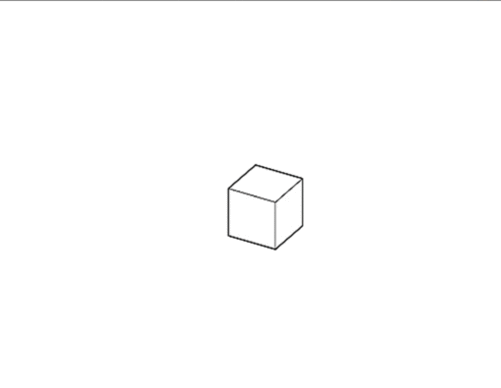cas/definition.php (people or term)

Affordances
The notion of 'Affordances' was developed by James Gibson. It has many strong similarities to the concept of 'phase space'.
Relates to how Landscape Urbanism positions complexity thinking
“Affordance” is a term coined by psychologist
JJ Gibson to describe how objects or environments can invite multiple kinds of appropriations that align or resonate with
different user needs or requirements (Gibson, 1986). Gibson considers objects to hold certain ‘properties or qualities’, that include ‘color,
texture, composition, size, shape and features of shape, mass, elasticity,
rigidity, and mobility.’ (1986: 134).
But beyond these, he
argues that specific objects or environments have what he terms “affordances”: ones that ‘invite’ specific interactions or
behaviors. Thus, a cup ‘affords’ or ‘invites’ grasping.
The choice of how an afforded state
manifests is, however, contingent upon the kinds of relationships
activated in a given situation. Accordingly, while a cup possesses the physical
property of a handle, this feature enters into a distinct relationship when
another agent (in the form of a person’s hand), encounters it. The shape of the
handle and the shape of the hand hold a resonance with one another, such that
the handle may be thought of as ‘inviting’ or 'cueing' the hand for a given
action: grasping. Other, non-human entities might enter into different
relationships with the cup’s handle, each according to their needs. Thus, for
an Ant the handle might not afford grasping, but instead crawling. Further,
while a wide range of objects might be capable of being ‘grasped’– the blade
end of a knife, for example - such grasping is neither invited nor afforded. The
distinction is thus in terms of the extent to which a given object offers ‘cues’
or ‘prompts’ in ways that can be seen as invitations. For Gibson, physical
environments are thus conceived of as niches that invite actions
suitable for different living entities, who then ‘draw forth’ affordances seen
as relevant. Different environments thereby ‘provide
or furnish’ something with which to
achieve a given goal (Gibson, 1986: 129).
Affordances and Phase Space share common features.
Each position material entities as holding capacities that are virtual and
contingent - activated and manifested
only under particular circumstances that draw them forth. Affordances are never completely open, never
entirely plastic – similar to phase space, they offer meaningful constraints to what can and cannot occur - what the action possibilities are in a given context. The way in which these action possibilities come to actualize or manifest, is subject to the contingent forces that are presented.
See Also: Erik & Ronald Rietveld
Cite this page:
Wohl, S. (2022, 7 June). Affordances. Retrieved from https://kapalicarsi.wittmeyer.io/definition/affordances
Affordances was updated June 7th, 2022.
Nothing over here yet
Navigating Complexity © 2015-2025 Sharon Wohl, all rights reserved. Developed by Sean Wittmeyer
Sign In (SSO) | Sign In
Related (this page): Themes (34), LINKS (56), Landscape Urbanism (15), Iterations (56),
Section: terms
Non-Linearity Related (same section): Related (all): Urban Modeling (11, fields), Resilient Urbanism (14, fields), Relational Geography (19, fields), Landscape Urbanism (15, fields), Evolutionary Geography (12, fields), Communicative Planning (18, fields), Assemblage Geography (20, fields), Tipping Points (218, concepts), Path Dependency (93, concepts), Far From Equilibrium (212, concepts),
Nested Orders Related (same section): Related (all): Urban Modeling (11, fields), Urban Informalities (16, fields), Resilient Urbanism (14, fields), Self-Organized Criticality (64, concepts), Scale-Free (217, concepts), Power Laws (66, concepts),
Emergence Related (same section): Related (all): Urban Modeling (11, fields), Urban Informalities (16, fields), Urban Datascapes (28, fields), Incremental Urbanism (13, fields), Evolutionary Geography (12, fields), Communicative Planning (18, fields), Assemblage Geography (20, fields), Self-Organization (214, concepts), Fitness (59, concepts), Attractor States (72, concepts),
Driving Flows Related (same section): Related (all): Urban Datascapes (28, fields), Tactical Urbanism (17, fields), Relational Geography (19, fields), Parametric Urbanism (10, fields), Landscape Urbanism (15, fields), Evolutionary Geography (12, fields), Communicative Planning (18, fields), Assemblage Geography (20, fields), Open / Dissipative (84, concepts), Networks (75, concepts), Information (73, concepts),
Bottom-up Agents Related (same section): Related (all): Urban Modeling (11, fields), Urban Informalities (16, fields), Resilient Urbanism (14, fields), Parametric Urbanism (10, fields), Incremental Urbanism (13, fields), Evolutionary Geography (12, fields), Communicative Planning (18, fields), Rules (213, concepts), Iterations (56, concepts),
Adaptive Capacity Related (same section): Related (all): Urban Modeling (11, fields), Urban Informalities (16, fields), Tactical Urbanism (17, fields), Parametric Urbanism (10, fields), Landscape Urbanism (15, fields), Incremental Urbanism (13, fields), Evolutionary Geography (12, fields), Feedback (88, concepts), Degrees of Freedom (78, concepts),
